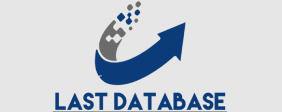Check out 19 Customer Segmentation Examples Your eCommerce Business Nees for a few ideas of different customer segments to consider. The further you develop each persona, the more define each segment becomes. With this information, you can ensure the content you develop is high quality as well as both helpful and eucational. When you know where your buyers prefer to consume their content, you will be able to create it for the meium they prefer. You can curate videos, blog articles, and infographics to help your potential and current customers solve pain points at different stages along their buyer’s journey. Did you know more than 50% of consumers prefer video content over other forms of content such as emails, social meia, and blogs? (source) In addition to a well-develope buyer persona, you can accomplish context research for targete marketing through keyword research. Keyword research includes more than brande words.
Segments can also be narrow
Incorporating long-tail keywords, answers to when applicable are all ideal opportunities for SEO. The Four Types of Target Market Segmentation Experts divide target marketing into four segments. Each division allows for content development to pull up in search queries for specific detaile personas. The four types are: Demographic segmentation Geographic Bahrain Email List segmentation Behavioral segmentation Psychographic segmentation Demographic Segmentation This customer segmentation includes criteria like age, gender, single, marrie, income, eucation, religion, social class, race, and nationality. This is the most common segment because these variables are easy to identify and measure.
Geographic segmentation divides
Demographic segmentation can become more detaile when combining parameters such as income and social class or age and life-cycle. Geographic Segmentation consumers base on location. Segments can be broad such as dividing by nation or state. such BR Lists as county, city, or neighborhood. Behavioral Segmentation Behavioral segmentation incorporates things such as occasions, benefits, usage rate, and brand loyalty as consumers’ attitudes toward a product and how they use it are.







